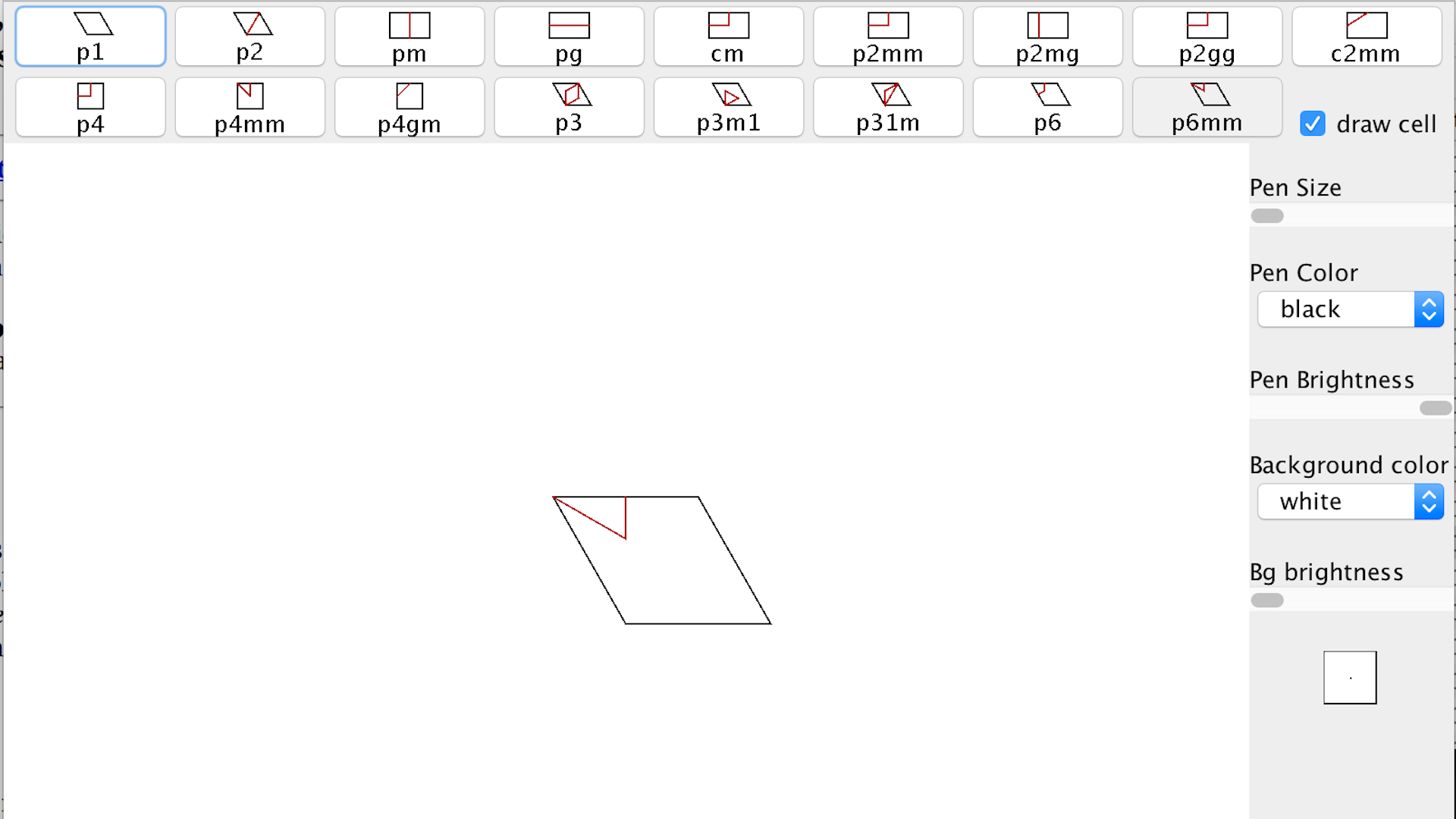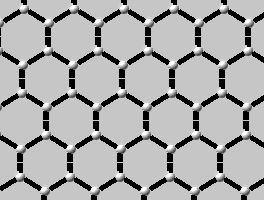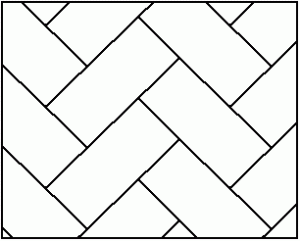Escher Web Sketch 2
Nicolas Schoeni, Wes Hardaker and Gervais Chapuis
École Polytechnique Fédérale de Lausanne, Switzerland

Instructions to get started quickly
Escher Web Sketch allows you to draw repeating patterns in the plane. You can select the symmetry of the patterns by clicking on one of the icons above the drawing area. The drawing tools are selected under the drawing area. You can also change the pattern size and location with the Modify cell button. The right hand side of the drawing area is reserved for each drawing tool’s usage. Typically it changes the pen size and color.
How to save your creation
The “Save…” button allows to store the file by opening a new page in your browser. You can save this file on your local computer by using the save facility of your browser. The file is saved in the format PNG and can be opened with most of the drawing programs.
Information on M.C. Escher
Numerous web sites exist dealing with the work and biography of M.C: Escher. Only a very short selection is given here:
Crystallographically interesting aspects illustrated by Escher Web Sketch
Crystallographers will recognize the list of 17 2D space groups (plane groups) characterized by their international symbol as described in the International Tables of Crystallography (Vol. A). The interested reader can consult the following websites:
- http://journals.iucr.org/iucr-top/comm/cteach/pamphlets/14
- http://www.clarku.edu/~djoyce/wallpaper/seventeen.html
in order to have some additional informations on the seventeen plane groups.
General and special positions
After selecting one of the 17 plane groups, the user may choose an object (a colored circle for example) and move it around within the unit cell. In some specific positions, the object and some of its symmetry-generated equivalents may converge into a single point. This single point is called a special position. All the others are general positions.
It is also easy to see that the number of symmetry-equivalent points in each unit cell depends on the point’s position. The number is largest for general positions and smaller on special positions. The number of symmetry-equivalent positions on special positions is always an integral fraction of the largest possible number.
This concept of general and special positions is important and is directly linked to the stoichiometry as expressed by the chemical formula of a crystalline sample.
Site symmetry
Special positions have not only the property of reducing the number of equivalent points in a unit cell but also of increasing the symmetry of the object sitting on a special position. The interested reader may discover for himself the symmetry of the special positions.
Simple two dimensional structures
- A graphite sheet: Select plane group p6mm. Select a carbon atom (colored circle) and move it until you obtain the typical honeycomb arrangement:

- A chevron like parquet-floor: Select space group p2gg. Select the line tool. With one single line placed suitably you can generate the full pattern. Observe the effect of the unit cell size on the pattern!

History of Escher Web Sketch
Since 1987, many crystallographers and many other specialists enjoyed the attractive software written for the Macintosh by Terry Flaherty from Loyola University in New Orleans. Escher Sketch was originally created for the purpose of designing periodic decorations. It was soon realized however that this application was an excellent teaching tool for the illustration of basic crystallography courses.
It was easy to select one of the 17 symmetry possibilities in two-dimensional space (the 17 two-dimensional space groups or plane groups) and use the symmetry operations to generate automatically 2D periodic pattern. With the various tools available, it was thus easy to generate all conceivable wall-paper (periodic) patterns.
In order to make such a program readily accessible to students and teachers of crystallography, and others interested in the art of periodic decorations, the current program has been developed in Java in order to be directly accessible on the World Wide Web (W3). In addition, the possibility of coloring the patterns has been introduced along with other tools to facilitate the creation of two-dimensional crystalline structures.